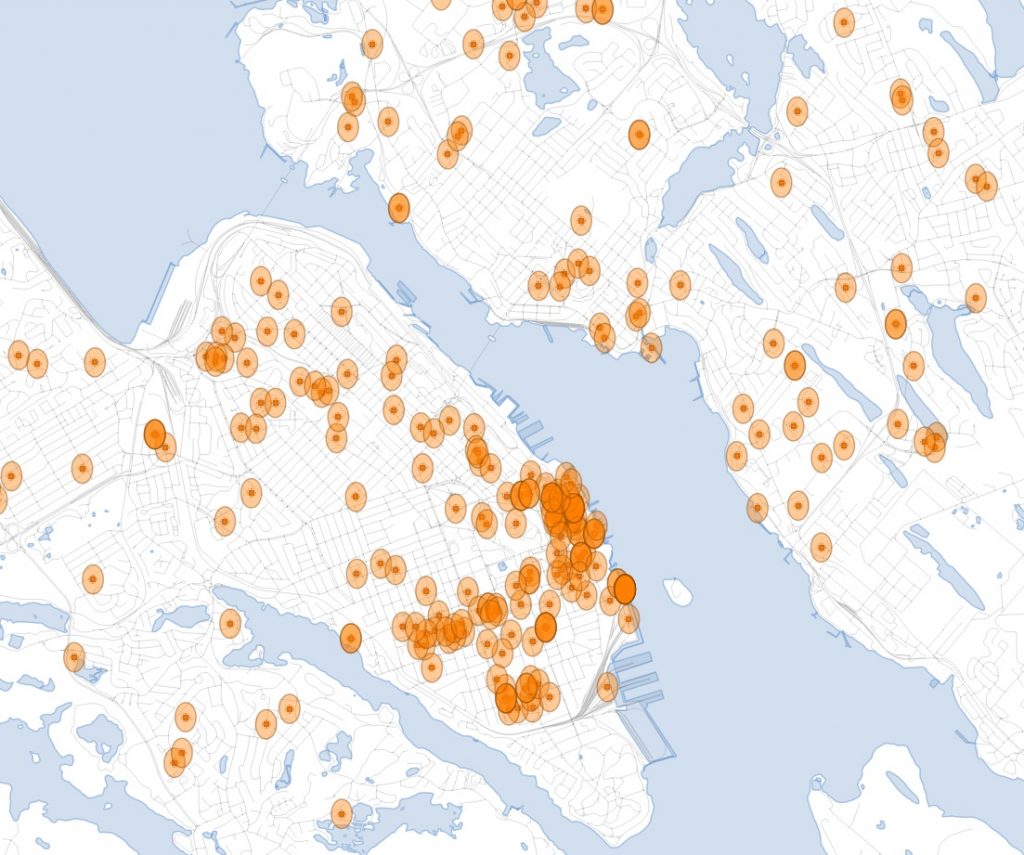This post needed an update. the original version was spurred by a March 2021 announcement that the province would be placing an AED in every school in the province. I asked if we taught CPR in schools. – We Don’t.
I first learned CPR in Grade 8, back in 1994, in school (in Ottawa). We should add this to the school curriculum. its a life skill. Its also important if we want to improve outcomes for patients who suffer sudden cardiac arrest.

The latest information I can find shows that the survival rate for out of hospital cardiac arrest in Nova Scotia is around 6%. Put bluntly, if you are a victim of sudden cardiac arrest, you will probably not survive. Many jurisdictions however have survival rates closer to 70%.
The Key to that massive jump in survival rates is prompt intervention by bystanders.
Bystander CPR is Critical. If you see someone collapse, and call 911, it will take at least 5 minutes for help to arrive. The chances of survival decrease by 10% for every minute without CPR. This fall, EHS will begin to provide telephone CPR instruction. This is good, but you can also learn the skill in advance . The video below can teach you to do effective CPR in less then 2 minutes. (or go take a course)
The second key piece to improving survival rates is bystander defibrillation. Research tells us that the sooner Defibrillation can be applied the better, and should happen within 3-5 minutes. ideally the goal for defibrillation should be 2.5 minutes. In any event, defibrillation needs to occur before professional responder’s can be expected to arrive.
This means AEDs need to be readily available. The average person can walk 400m in about 4 minutes, meaning you need to be within 200m of an AED if your going to rely on it. I did a quick analysis to see what areas fall within 200m of a Public Access AED in Halifax.

The map above is based on data from the EHS AED registry. The analysis is imperfect, as it only assumes a 200m as the crow flys radius around each AED, and makes no allowances for vertical height, or obstructions on the ground. In short it overstates the actual AED Coverage area.
AED’s will tell you how to use them. you simply need to open the cover, or press the on Button. Below is 90 second video on AED use.
Research tells us that vertical living can also greatly effect you chances of survival. A 2016 study suggests that those suffering sudden cardiac arrest on the third floor or below, are twice as likely to survive as those living above the third floor. In an analysis by floor, survival was less then 1% above floor 16, and there were no survivors above the 25th floor.
If you have an AED, register it with EHS at savelivesns.ca. if your building doesn’t have an AED, you should get one, especially if it is over 3 stories.
You – probably have a few questions:
Q: Hands only CPR – is that it?
yes it is. Studies have shown that rapid CPR is essential to improving survive ability of cardiac events. get the blood flowing again as fast as you can.
Q: what about breaths?
not that important. there is still quite a bit of oxygen in the blood, but it needs to circulate. Plus, breaths are gross – they subject you to communicable diseases, and people having cpr done to them tend to throw up.
Q: Don’t I need Training?
Ideally, yes. training will give you practice, and have your technique evaluated by a Professional. In the case of a sudden cardiac arrest, nothing you do will make the situation worse for the patient. you can only help.
Q:What happens when responders arrive?
fire departments are trained to Health Care provider level CPR. They have tools to secure airways, and start providing breaths. Paramedics come with a collection of drugs and more advanced tools.
